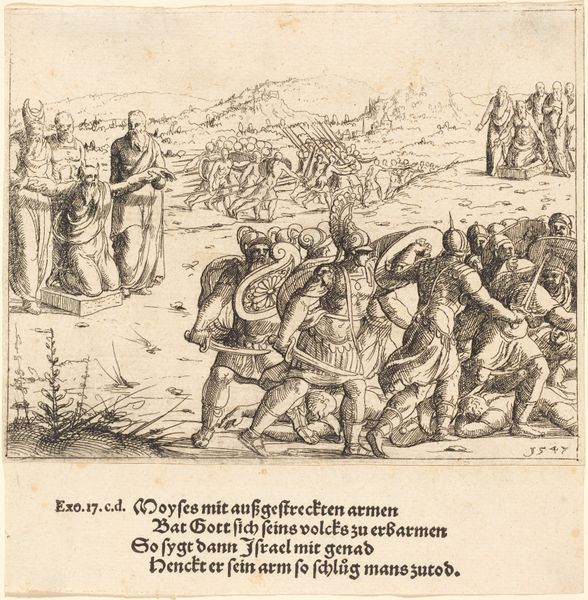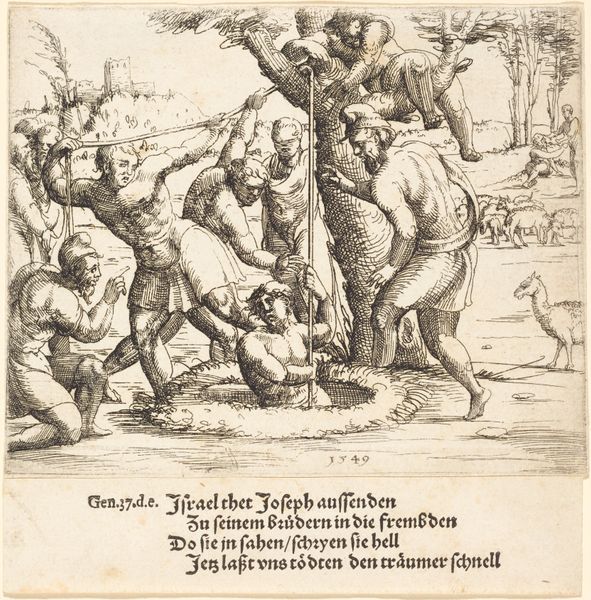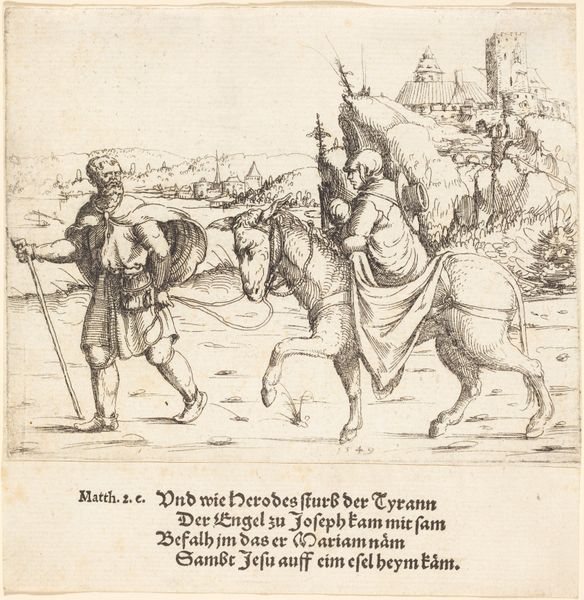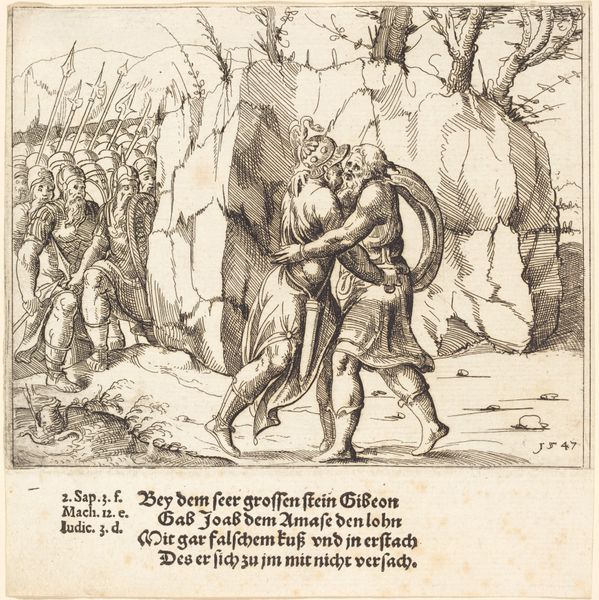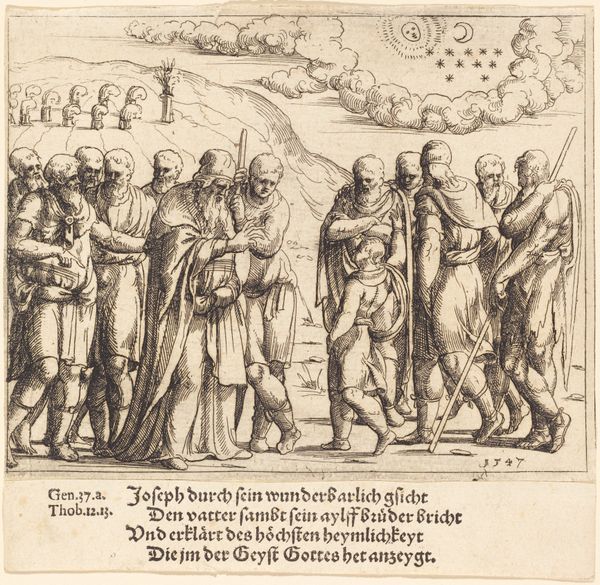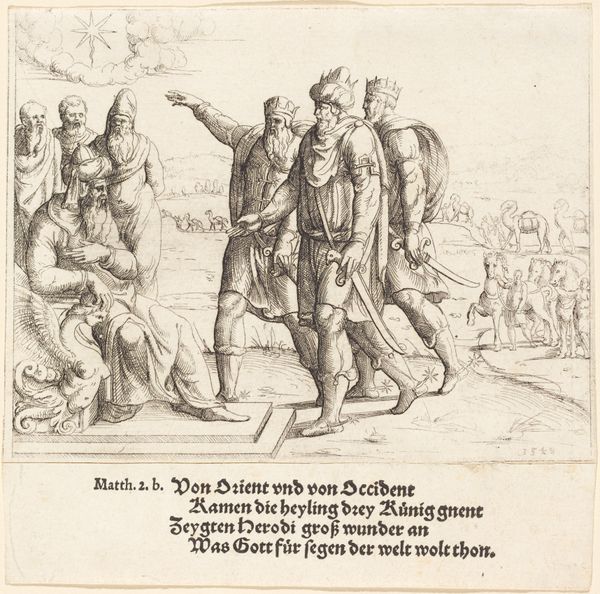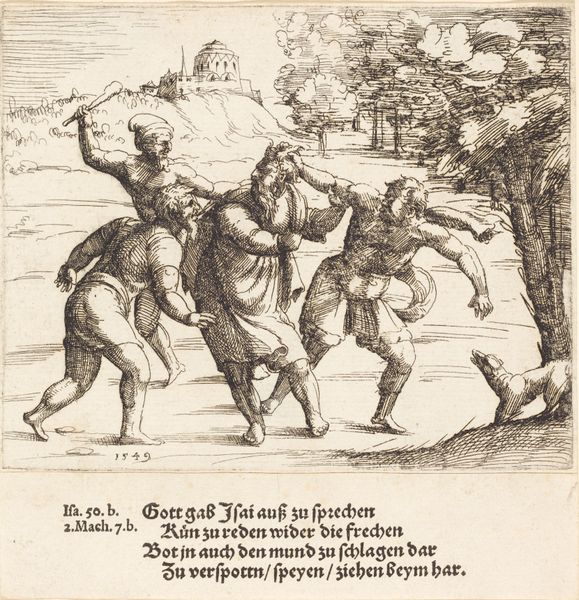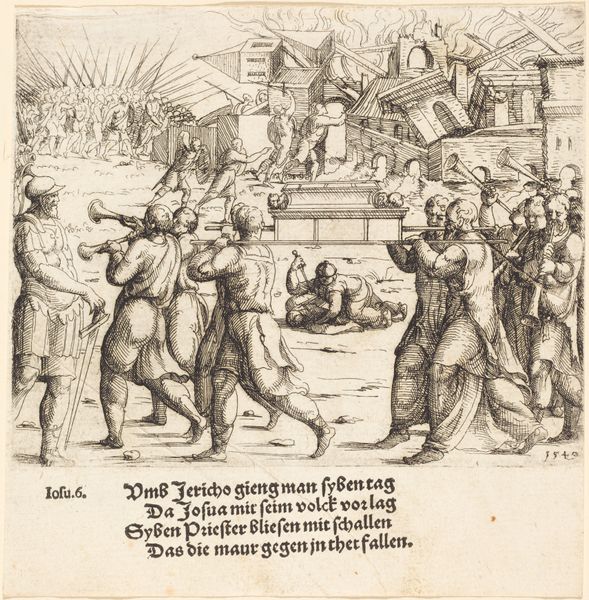
The Twelve Stones, and the Waters of the Jordan are Divided 1548
0:00
0:00
print, engraving
#
narrative-art
# print
#
landscape
#
figuration
#
line
#
history-painting
#
northern-renaissance
#
engraving
Copyright: National Gallery of Art: CC0 1.0
Editor: Here we have Augustin Hirschvogel’s 1548 engraving, “The Twelve Stones, and the Waters of the Jordan are Divided.” It feels quite busy, with all the figures and detailed landscape. I'm curious – how do you interpret this work, especially considering its historical context? Curator: What I see is a visual manifestation of power, promise, and patriarchy deeply embedded in the act of claiming land. Hirschvogel visualizes a key moment from the Book of Joshua, where the Israelites, led by men, cross the Jordan River into the Promised Land, carrying twelve stones to commemorate the event. How does this narrative resonate in our current socio-political climate, where claims to land are often entangled with complex histories of colonialism, displacement, and struggles for liberation? Editor: That's a powerful perspective. So, you’re saying that it’s not just a simple historical depiction, but something far more loaded. How does the artwork’s medium and style further inform that interpretation? Curator: Absolutely. Consider that this is a print, which means it’s reproducible and easily disseminated. In the context of the Northern Renaissance, this engraving functions almost as propaganda, reinforcing a particular narrative of divine right and conquest. The landscape style is also telling, framing the scene as both idyllic and conquerable. Are women represented? Are the indigenous populations acknowledged? These absences speak volumes. Editor: So, by examining who is included and excluded, and how the scene is presented, we can uncover layers of meaning related to power dynamics and historical narratives. Curator: Precisely. Think about it: who is telling the story, and whose voices are amplified or silenced in the process? The 'Promised Land' narrative has had huge implications, and still does, for thinking about rightful ownership. What does it mean when such narratives are used to justify the dispossession of others? Editor: This has really given me a fresh outlook on this engraving. I’ll definitely think about those absences next time I approach an artwork depicting historical events. Curator: Excellent. The absences and the context they reveal are sometimes as important as what’s depicted.
Comments
No comments
Be the first to comment and join the conversation on the ultimate creative platform.
